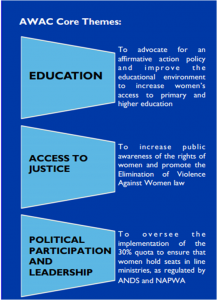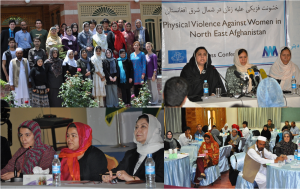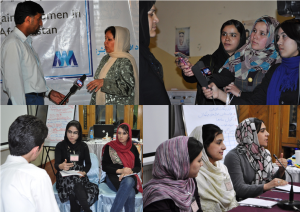
The Afghan Women’s Advocacy Coalition (AWAC) was formed in 2010 by a group of 20 civil society organizations in coordination with the Ministry of Women Affairs. The platform was established to coordinate the advocacy grant program. Â When the grant came to an end, the coalition decreased in size including just two organizations and a number of dedicated individuals. Â AWAC is currently managed by volunteers.
The purpose of this coalition is to create a joint advocacy platform of diverse civil society arenas including media organizations, umbrella organizations, civil society networks, individuals and womens’ groups with a gender focus. The coalition is working to advocate for the implementation of policies by the Afghan Government to stimulate development and achieve women’s rights goals such as the implementation of National Action Plan for the Women of Afghanistan (NAPWA).
To find out more you can visit their website or contact them by email awac.af@gmail.com
Women are one of the important pillars of Afghan society. They play different roles, from managing the home to managing the political arena.
Over the past 10 years through public policy and legislation positive changes have been created for women. The Elimination of Violence against Women law, the new constitution and, with the help of a quota system, women’s’ participation in parliament, can be seen as examples of these changes.
A new ministry has also emerged for women, which exists in 34 provinces and has had a major impact on the lives of women. In social life women are now at least allowed in public and can move around without anyone escorting them. Girls are now allowed to enroll in schools and some women have started their own businesses and emerged as business leaders. Many girls have received scholarships to study aboard and gained access to universities like American University of Afghanistan and Kardan. However all of these changes will not be sustainable if institutional reform is not adopted. Changes that need to come from within Afghanistan by the Afghan people and not just from the international community and funded agencies.
The main challenges Afghan women are faced with are tradition, culture, education, domestic violence and rape. Women are now more aware of their rights but they don’t know where to go and seek help. In rural areas women cannot go to school to gain an education because of traditional culture. Security is another problem for women in rural and poor urban areas. In urban areas the big threat for women is that they don’t have access to information about life and work in the public sector. Many people still don’t like the idea of women working outside the home.  The government is losing interest for pushing for women’s rights in the country. And finally, educated women in urban areas are not united as they should be.
To bring equality to women in Afghan society, men’s attitudes need to change. Since men are the gate keepers of the house, they need to be educated about giving women their rights. Women cannot be the only people educated about these rights. Â Further to develop women’s futures, they need to unite. They need to work together for one goal and set a measurable milestone in order to achieve the goal.
“Our aspirations for Afghan women is to see all women receive an education and an equal partnership in public life with menâ€



0 Comments